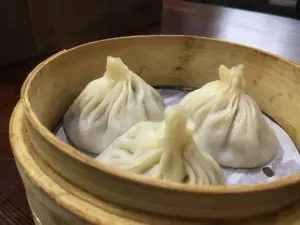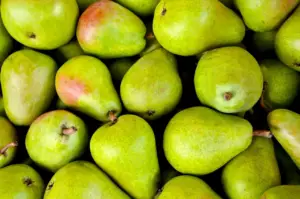Are you ready for a food adventure like no other? Look no further than Hong Kong’s street food scene. With its bustling night markets and diverse range of dishes, exploring this culinary culture is a must-do for any foodie.
From traditional Cantonese delicacies to trendy fusion creations, every bite promises to be a flavor explosion. Hong Kong is a city that embodies the fusion of East and West, and its street food scene is no exception.
You’ll find traditional dishes like dim sum and congee alongside international favorites like Korean fried chicken and Japanese takoyaki. Whether you’re a seasoned foodie or just looking to try something new, Hong Kong’s street food has something for everyone.
So grab your chopsticks and get ready for a gastronomic adventure you won’t soon forget.
Key Takeaways
- Hong Kong’s street food scene offers a fusion of East and West, blending traditional Cantonese delicacies and international favorites for a flavor explosion.
- Must-try street food dishes in Hong Kong include egg tarts, pineapple buns, mango-based desserts, and spicy fish ball pizza.
- To fully experience Hong Kong’s street food culture, visitors should have an open mind, bring cash, and not be intimidated by crowds and long lines.
- Hong Kong’s culinary scene reflects a unique history influenced by Cantonese, British, and Portuguese cultures, resulting in a melting pot of flavors and textures.
Sampling Traditional Cantonese Dishes
You’re in for a treat as we explore the traditional Cantonese dishes of Hong Kong’s street food culture.
First up is dim sum, a classic dish that consists of bite-sized portions of steamed or fried delicacies such as dumplings, buns, and rolls.
Next, try the wonton noodles, a comforting bowl of egg noodles topped with succulent wontons and savory broth.
And lastly, be sure to savor the roasted meats, such as crispy pork belly or succulent char siu, that are the pride and joy of Cantonese cuisine.
Dim Sum
Now, if you’re in the mood for some delicious dim sum, you’ll want to head over to one of Hong Kong’s many bustling tea houses. Dim sum is a popular type of Cantonese cuisine that consists of small, bite-sized portions of food served in bamboo baskets. It’s a perfect way to sample a variety of flavors and textures in one meal.
When you enter a dim sum restaurant, you’ll be greeted with a lively atmosphere and the sound of clanging dishes. The menu is extensive, and you can choose from a wide range of options like steamed shrimp dumplings, barbeque pork buns, and rice noodle rolls.
One of the most popular choices is the har gow, which is a type of shrimp dumpling that’s translucent and delicate. The flavors are subtle yet satisfying, and the texture is chewy and juicy.
Overall, dim sum is a must-try experience for any food lover visiting Hong Kong.
Wonton Noodles
If you’re craving a hearty and satisfying meal in Hong Kong, don’t miss out on trying the wonton noodles – they’re a local favorite for a reason!
This dish consists of thin egg noodles served in a savory soup made with pork bones, dried flounder, and dried shrimp. The star of the dish is, of course, the wontons – delicate parcels of minced pork and shrimp wrapped in a thin, translucent skin.
The best wonton noodles are found at small, unassuming shops that specialize in the dish. Many shops will allow you to customize your order by choosing the type of noodles you prefer and the number of wontons you want.
The noodles should be springy and chewy, the broth rich and flavorful, and the wontons plump and juicy. Don’t forget to add a dollop of chili oil or a dash of vinegar to enhance the flavors even more.
Wonton noodles are the perfect comfort food on a cold day or after a long day of exploring the city.
Roast Meats
When you’re feeling hungry in the city, head to a local restaurant and indulge in the mouthwatering roast meats – the crispy skin and juicy meat will leave you wanting more. Hong Kong’s street food culture is incomplete without the savory roast meats that most restaurants serve. Roast meats are a staple in Cantonese cuisine and are popular among locals and tourists alike. The meat is typically cooked in a charcoal oven, giving it a unique smoky flavor that sets it apart from other types of meat.
There are various types of roast meats to choose from, such as roast duck, char siu (barbecue pork), and siu yuk (roast pork belly). Each meat has its own distinct flavor and texture, but all are known for their crispy skin and succulent meat. The best way to enjoy roast meats is to pair them with a plate of steaming hot rice and some crunchy vegetables. Here is a table to help you understand the different types of roast meats available:
| Type of Roast Meat | Description |
|---|---|
| Roast Duck | Tender duck with crispy skin and rich flavors |
| Char Siu | Sweet and savory pork with a caramelized glaze |
| Siu Yuk | Crispy pork belly with juicy meat |
| Roast Goose | Similar to roast duck but with a more intense flavor |
| Soy Sauce Chicken | Chicken marinated in soy sauce and cooked until tender |
Overall, roast meats are a must-try when exploring Hong Kong’s street food culture. They are a delicious and affordable option for anyone looking to satisfy their hunger and experience the local cuisine.
Indulging in Sweet Treats
Now it’s time to satisfy your sweet tooth and indulge in some of Hong Kong’s famous desserts.
First up, don’t miss out on trying the delicious Egg Tarts – a flaky pastry shell filled with a creamy egg custard.
Next, sink your teeth into a warm Pineapple Bun – a sweet bread roll with a crunchy, sugary topping.
And finally, cool off with some refreshing Mango Desserts – from mango pudding to mango sago, there are plenty of variations to try.
These sweet treats are a must-try for anyone with a sweet tooth visiting Hong Kong.
Egg Tarts
Indulge in the creamy and flaky goodness of Hong Kong’s famous egg tarts. These delectable treats are a must-try for anyone exploring the city’s street food culture.
Made with a buttery crust and a rich egg custard filling, egg tarts are a perfect combination of sweet and savory flavors.
One of the best places to sample egg tarts is at Tai Cheong Bakery. This iconic bakery has been serving up these treats for over 60 years, and their egg tarts are widely considered to be the best in the city.
The pastry is perfectly crisp and the filling is smooth and creamy, with just the right amount of sweetness. Whether you’re a fan of traditional egg tarts or prefer the more modern twist of adding cheese or coconut, there’s something for everyone at Tai Cheong Bakery.
So, indulge in a bite (or two) of this heavenly dessert and experience the true taste of Hong Kong’s street food culture.
Pineapple Buns
You can’t resist sinking your teeth into a warm, fluffy Pineapple Bun from one of the many bakeries in Hong Kong. The exterior of the bun is crispy and golden brown, while the interior is soft and airy.
As you take your first bite, you’ll be delighted by the sweet, buttery flavor, which is enhanced by the subtle hint of pineapple. Pineapple Buns, also known as ‘Bo Lo Bao,’ are a staple in Hong Kong’s street food culture.
They are served plain or filled with various fillings, such as custard or red bean paste. Some bakeries even offer a savory version, filled with pork or beef.
The unique texture and taste of Pineapple Buns make them a must-try for any foodie visiting Hong Kong.
Mango Desserts
If you’re craving something sweet and tropical, don’t miss out on trying some of the delicious mango desserts available in Hong Kong. Known for its abundant use of fresh fruits, Hong Kong street food culture has a wide variety of mango-based desserts that are perfect for satisfying your sweet tooth.
From mango sago to mango pancakes, these desserts are not only delicious but also a great way to cool down during hot and humid days. One popular mango dessert is mango sago, a refreshing pudding-like dessert made with fresh mangoes, sago pearls, and coconut milk. The texture is smooth and creamy, and the sweetness of the mango is perfectly balanced by the subtle coconut flavor.
Another must-try dessert is the mango pancake, a thin crepe-like pancake filled with fresh mango slices and whipped cream. The combination of the soft and fluffy pancake with the juicy and sweet mango is simply heavenly.
Hong Kong’s street food culture is not complete without trying some of their mango-inspired desserts. With the abundance of fresh mangoes available in the city, it’s no wonder why these desserts are a hit among locals and tourists alike. So, go ahead and indulge in some of these sweet treats and experience a gastronomic adventure like no other.
Trying Trendy Fusion Foods
Feeling adventurous? Try out some of the trendy fusion foods that Hong Kong’s street food scene has to offer! Hong Kong is known for blending traditional Chinese flavors with Western influences, resulting in unique and delicious food creations.
One popular example is the ‘egg waffle ice cream,’ which combines the crispy texture of an egg waffle with the creamy sweetness of ice cream. The result is a mouth-watering dessert that is both crispy and smooth.
Another trendy fusion food to try is the ‘spicy fish ball pizza.’ This dish combines two classic street foods: spicy fish balls and pizza. The fish balls are placed on top of a thin crust pizza and topped with cheese and spicy sauce. The combination of the chewy fish balls and the crispy crust creates a unique texture that is truly Hong Kong.
So, if you’re feeling daring, try out some of these trendy fusion foods in Hong Kong and experience a gastronomic adventure like no other!
Exploring Night Markets
Get ready to immerse yourself in a vibrant world of colorful lights, tantalizing aromas, and bustling crowds as you venture into Hong Kong’s bustling night markets. These lively markets are a hub for locals and tourists alike, offering a wide variety of street food options that are sure to satisfy any craving.
Here are just a few things to keep in mind as you explore:
- Come hungry! With endless food options, you’ll want to make sure you have plenty of room for all the delicious bites you’re about to try.
- Be prepared to haggle. Many vendors are open to negotiation, so don’t be afraid to ask for a better price.
- Keep an eye out for local specialties like stinky tofu, egg waffles, and fish balls. These unique dishes are a must-try for any foodie.
- Don’t forget to try some refreshing drinks like sugar cane juice or Hong Kong-style milk tea to wash down all the tasty snacks.
As you navigate through the crowded stalls, you’ll be able to witness firsthand the lively energy and excitement that surrounds Hong Kong’s street food culture. From the sizzling skewers of meat to the steaming bowls of noodles, each bite is a culinary adventure that will leave you wanting more.
So, grab a group of friends and get ready to indulge in a night of delicious food and unforgettable memories.
Learning About the City’s Culinary History
You’ll be fascinated to learn about the city’s rich culinary history, which has been shaped by a blend of Chinese and international influences. Hong Kong’s cuisine is a reflection of its unique history, as it has been influenced by the Cantonese, British, and Portuguese cultures. The city’s food is a melting pot of flavors and textures, with a mix of traditional Cantonese dishes, international cuisine, and street food.
To truly understand Hong Kong’s culinary history, it’s important to explore its diverse street food culture. From the iconic egg tarts and pineapple buns to the more adventurous delicacies like snake soup and stinky tofu, the city’s street food scene is a gastronomic adventure. Hong Kong’s street food culture is not only a reflection of the city’s culinary history, but also its vibrant and dynamic atmosphere. Whether you’re a food enthusiast or an adventurous traveler, exploring the city’s street food culture is a must-do experience.
| Cantonese Cuisine | International Cuisine |
|---|---|
| Dim Sum | Fish & Chips |
| Roast Pork Belly | Pizza |
| Wonton Noodles | Burgers |
This table showcases the diversity of Hong Kong’s culinary scene. The Cantonese cuisine column features traditional dishes that are a staple of Hong Kong’s food culture, while the International cuisine column highlights some of the international influences that have shaped the city’s food scene. From dim sum to burgers, Hong Kong’s culinary scene is a mix of traditional and modern cuisine, making it a foodie’s paradise.
Tips for Navigating the Street Food Scene
Now that you’ve learned about the rich culinary history of Hong Kong, it’s time to dive into the present and explore the city’s vibrant street food scene.
Navigating the bustling and diverse street food markets can be overwhelming, but with a few tips, you’ll be able to taste your way through the city like a pro. Firstly, it’s important to have an open mind and be willing to try new things. Hong Kong’s street food scene offers a wide variety of dishes from different cultures, so don’t be afraid to step out of your comfort zone.
Secondly, bring cash as many vendors do not accept credit cards. And finally, don’t be intimidated by the crowds and long lines – they often indicate the most popular and delicious stalls.
To truly immerse yourself in the street food culture, here are three must-try dishes to add to your list:
-
Dim sum: These bite-sized portions of steamed or fried dumplings filled with meat, seafood, or vegetables are a staple of Hong Kong cuisine.
-
Egg waffles: Also known as ‘eggettes’, these crispy and fluffy waffles are a popular dessert or snack.
-
Fish balls: Made from a mixture of fish paste, flour, and seasoning, these bouncy and flavorful balls are a beloved street food item in Hong Kong.
With these tips and must-try dishes in mind, you’re ready to start your gastronomic adventure through Hong Kong’s street food scene. So grab a friend, an empty stomach, and get ready to indulge in the city’s culinary delights.
Frequently Asked Questions
What are the typical ingredients used in Cantonese dishes?
When it comes to Cantonese cuisine, the ingredients used are diverse and abundant. From fresh seafood to tender meats, Cantonese dishes are renowned for their high quality ingredients. Some of the typical ingredients used include soy sauce, oyster sauce, hoisin sauce, ginger, garlic, and sesame oil, which are used to enhance the flavor of the dishes.
Cantonese cuisine also incorporates a variety of vegetables, such as bok choy, Chinese broccoli, and snow peas, which are often stir-fried to maintain their crispness and natural flavor. The use of rice and noodles is also prevalent in Cantonese cuisine, with dishes like congee, fried rice, and chow mein being some of the most popular.
Overall, Cantonese cuisine is known for its balance of flavors, textures, and aromas, making it a beloved cuisine around the world.
How are sweet treats in Hong Kong different from those in other countries?
When it comes to sweet treats in Hong Kong, you’ll find a unique blend of traditional Chinese flavors and modern twists. Unlike the overly sugary desserts found in many other countries, Hong Kong’s sweet treats tend to be more subtly sweet and often incorporate ingredients like red bean, sesame, and lotus seed.
You’ll find a range of desserts from egg tarts and pineapple buns to mango sago and black sesame rice balls. One standout sweet treat is the egg waffle, or gai daan jai, which is made by cooking a sweet batter in a special waffle iron until it forms an airy, crispy texture.
Overall, Hong Kong’s sweet treats offer a delicious and distinct experience that is sure to satisfy any sweet tooth.
What are some popular fusion food combinations in Hong Kong?
Popular fusion food combinations in Hong Kong are a testament to the city’s diverse culinary influences. You’ll find dishes that blend Chinese, Western, and Southeast Asian flavors.
One popular fusion dish is the pineapple bun with butter. It consists of a sweet, pineapple-flavored bread paired with a slab of salted butter. It’s a perfect example of how Hong Kong food can be both sweet and savory at the same time.
Another dish is curry fish balls, which feature a quintessentially British spice in a Chinese street food staple.
For a more substantial meal, try the Hong Kong-style spaghetti. It’s cooked with soy sauce, tomato sauce, and a variety of meats and vegetables. It’s a unique twist on traditional Italian pasta, and it’s a must-try for anyone looking to explore the vibrant food scene in Hong Kong.
Are there any special events or festivals related to street food in Hong Kong?
If you’re looking for some special events or festivals related to street food in Hong Kong, you’re in luck. This vibrant city is known for its love of food, and there are several food-centered events throughout the year.
One of the most popular is the Hong Kong Food Expo, which takes place annually in August and features a wide range of local and international food and beverage exhibitors.
Another must-visit is the Hong Kong Wine & Dine Festival, which takes place in November. This festival showcases the city’s diverse culinary scene and offers visitors the chance to sample some of the best food and wine from around the world.
Additionally, there are various night markets and food festivals that take place throughout the year, offering visitors the chance to sample a wide range of street food and local delicacies.
So, if you’re a foodie looking for a gastronomic adventure, Hong Kong is the perfect destination for you.
What role does street food play in Hong Kong’s cultural identity?
Street food plays a significant role in Hong Kong’s cultural identity. It’s not just about satisfying one’s hunger, but also about experiencing the city’s diverse and vibrant food culture.
The city is known for its street food, which includes a variety of dishes from traditional dim sum to unique creations like fish balls and egg waffles. It’s an essential part of the city’s food scene, and locals and tourists alike flock to the streets to indulge in these delicious treats.
Street food vendors also provide affordable and convenient food options, making it accessible to everyone. Hong Kong’s street food culture is a reflection of the city’s history, diversity, and creativity. It’s undoubtedly an integral part of its cultural identity.
Conclusion
Congratulations, you’ve just completed a gastronomic adventure through Hong Kong’s street food culture! You’ve experienced the traditional Cantonese dishes, indulged in sweet treats, tried trendy fusion foods, explored night markets, and learned about the city’s culinary history.
As you reflect on your journey, you can’t help but feel amazed at the diversity and richness of Hong Kong’s street food scene. From savory dumplings to sweet egg waffles, from spicy fish balls to refreshing mango desserts, Hong Kong offers a feast for all senses.
You’ve also noticed the creativity and innovation of the local chefs, who blend different cuisines and ingredients to create unique and delicious dishes.
If you plan to come back to Hong Kong, you have some tips for navigating the street food scene: arrive hungry, bring cash, wear comfortable shoes, and be open to trying new things. You might also want to research some of the city’s food tours and cooking classes, which can provide a deeper insight into Hong Kong’s culinary culture.
Overall, you’ve had an unforgettable experience that has expanded your palate and your appreciation for the power of food to connect people and cultures.


































































































































































